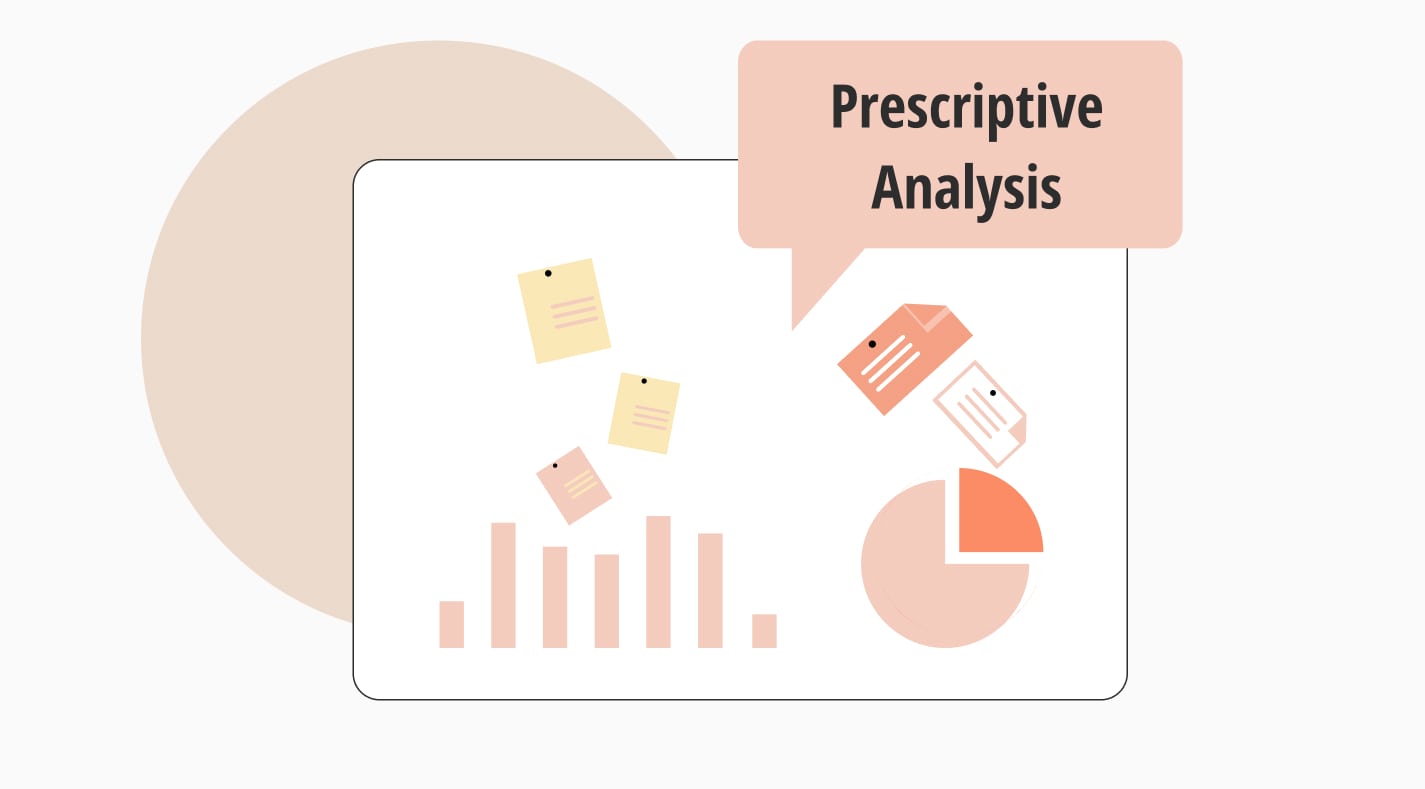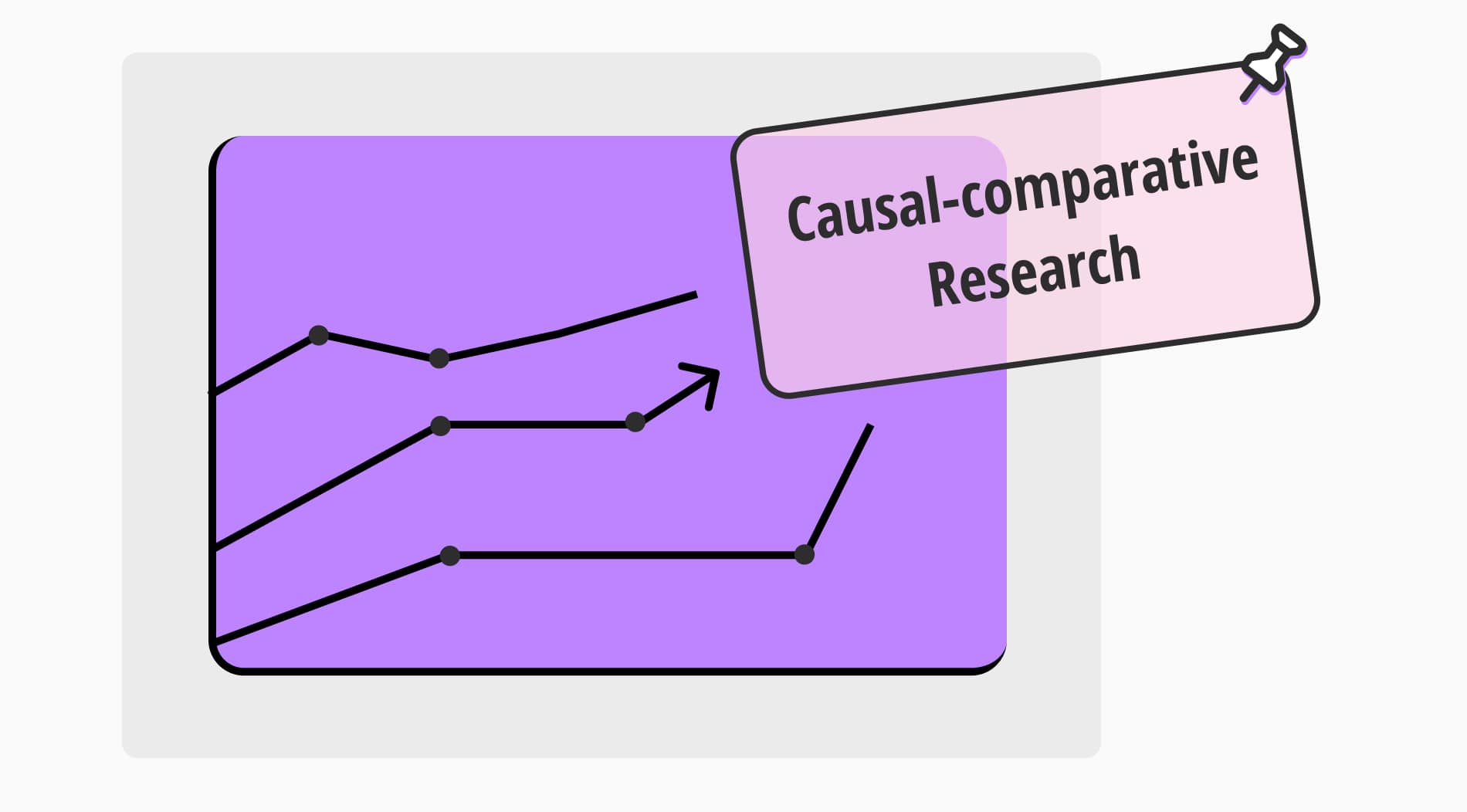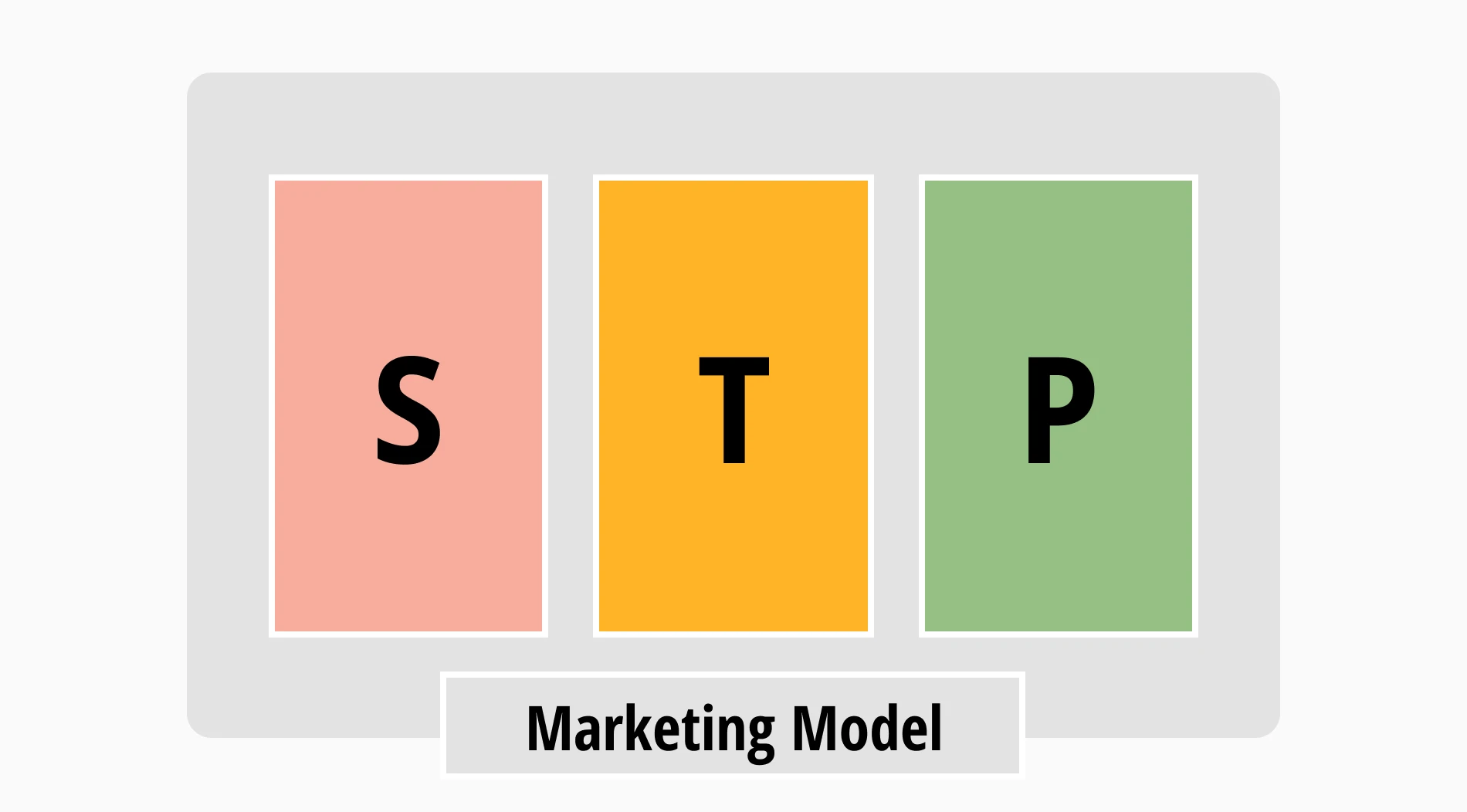
STP, or Segmentation, Targeting, and Positioning, is a customer-focused approach to marketing that is used in marketing and is highly important in selling your product to the right targeted audience. Whether you are promoting a fitness app or an audiobook, identifying your target customers will surely be more profitable for your business.
In this article, we will explain the STP model in business and marketing, the important steps to create carefully targeted products and audiences to provide an efficient and successful service, and some of the known advantages and disadvantages of this approach to guide you through the STP marketing process.
What is STP Marketing?

The STP approach in marketing—also known as Segmentation,Targeting, andPositioning—is a helpful tool that focuses on consumers.
It helps you analyze your product or service and communicate its benefits and value to a specific audience of potential customers. This approach lets you better connect with your customers through personalized communication methods.
Steps to conduct an STP Marketing analysis
As the letters stand for Segmentation, Targeting, and Positioning, businesses can use this model to customize their product by developing a marketing strategy for a specified audience. This can also be done by dividing each component of a certain product by analyzing the consumer segments. Below, we unpack the STP model with the steps:
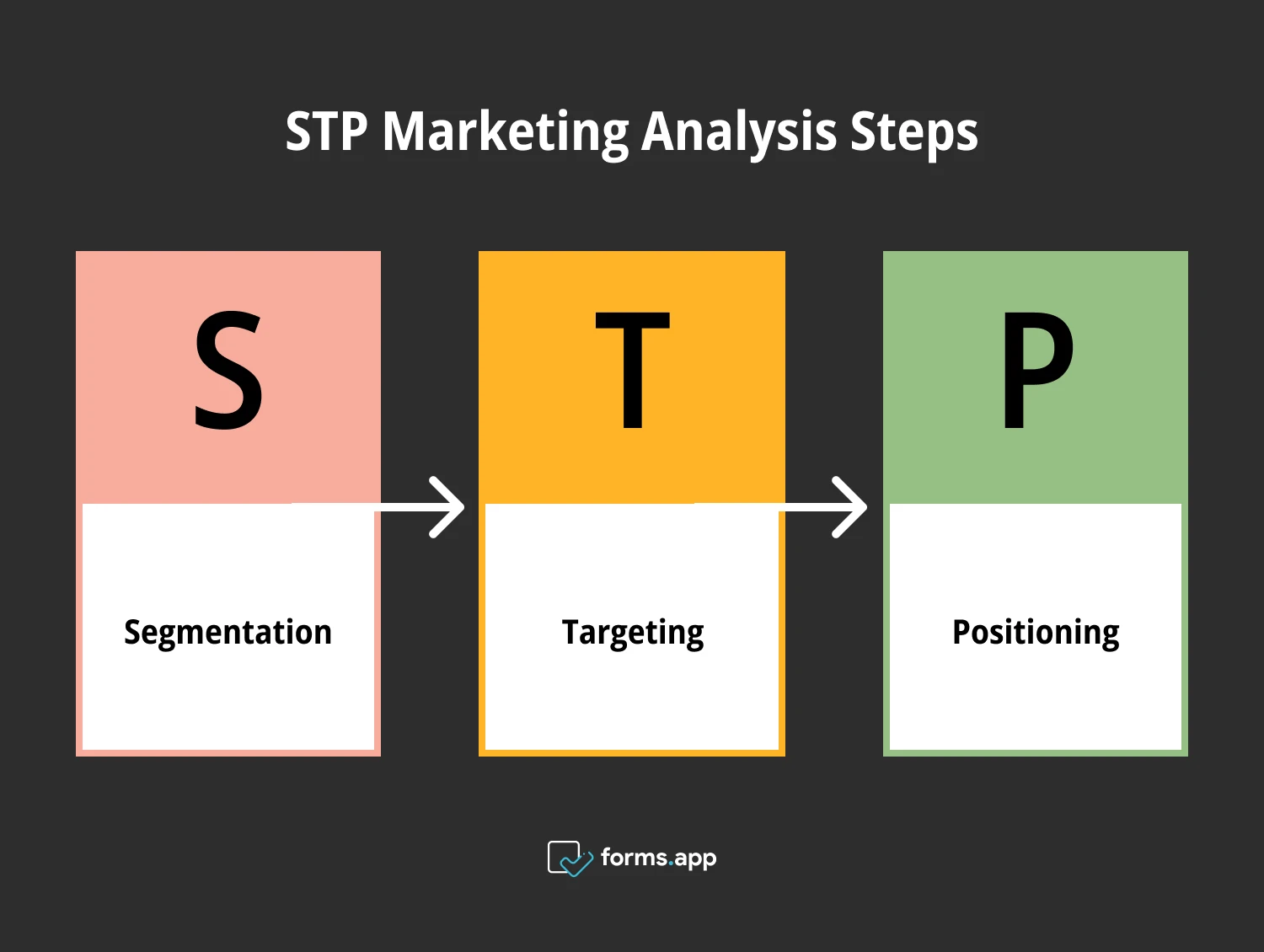
STP marketing analysis steps
1. Segmentation
Segmentation identifies your customers’ needs by dividing your target group into smaller categories based on their significant features, characteristics, and individual differences. Whatever the segment size is, segmenting your audience helps you better communicate with your customers and optimize the customer experience. You can segment your audience by considering certain criteria:
- Demographics: This criterion helps you to see who your customers are based on their age, gender, education, profession, location, and so on.
- Psychographics: This helps you understand why your customers purchase your product or service depending on their personal preferences, personality traits, values, and other traits)
- Lifestyle: This is about your target audience’s hobbies, leisure activities, art, music, cultural taste, and so on.
- Behaviour: This criterion is about your audience’s shopping habits, how they select and use a product, how often they go back to the same product, and what they look for in a product.
The segmentation process is similar to creating a buyer persona. Both are methods to understand the profile of your customers to create a tailored product or service efficiently. However, a buyer persona is fictitious and embodies traits and characteristics of the target audience, while segmentation is related to the division of a large group of customers into smaller groups of consumers.
To give an example of Segmentation, let’s think of a coffee shop. Given the vast number of coffee shops in the city, the business owners need to segment their audience into smaller categories. Let’s have a look at these different segments:
Segment A
This is made up of young professionals, such as freelancers, who need a place to work where they can also enjoy some nibbles and good coffee.
Segment B
This segment is made up of families with kids and middle-aged individuals who visit the place on holidays or at the weekend for breakfast or leisurely breakfasts.
Segment C
This is made up of students who look for affordable coffee options and a quiet place to study.
This segmentation process can help you understand how to position and tailor your service for a certain type of audience and their particular needs. Effective positioning with customer segments can increase the chance of having a successful business. You can also use surveys to collect specific data from your target audience by creating customized surveys on forms.app.
2. Targeting
Following the completion of the segmentation process, it is now time to target the segment that you think will be the most profitable for your business. This strategic decision will also affect your marketing campaign, social media content, digital marketing, and potential growth. Let’s take the segments for the coffee shop example.
For Segment A, you might want to use digital advertising on apps or social media websites as your marketing channels since it is for young professionals. For promotions, you might want to offer a “Workday Special,” including discounts on certain products in your shop.
For Segment B, local newspapers, community boards, and local social media groups can be useful tools for marketing efforts. You can offer brunch or breakfast deals or family discounts on certain days for promotions.
For Segment C, you can use campus bulletin boards, student platforms, social media, and partner colleges or schools. You can offer loyalty programs, student discounts, and special deals to attract more students.
It might take a long time and a great effort to target a segment of your audience successfully. After all, it depends on the analysis of your segments, which will eventually create the size of your business and profits.
3. Positioning
To make your product valuable and competitive in the market, you need to position it strategically. Product positioning is about having potential customers prioritize your product over others in the market. For this, you need a good product positioning strategy. Knowing the gaps and needs in the market is one way of identifying and deciding where your product fits and also targeting the right audience.
Once you have created your segments, take a look at your product from your segment's position to examine why they would want your product. Understanding how each segment perceives your product will help you with positioning your offering more accurately. There are 3 main ways of positioning your product:
1- Functional positioning: This is about resolving a problem or providing benefits to customers.
2- Symbolic positioning: This refers to enhancing the self-image or self-esteem of your customers.
3- Experiential positioning: This refers to the parts of your product that have an emotional connection with your customers.
One of the best ways of identifying how to position your product is doing it visually by using positioning maps, also known as perceptual maps. Some websites, such as Visual Paradigm or Creately give examples of and provide tools for positioning maps, which can give you an idea of how to create one for your unique product features according to what your target audience desires.
STP Model Example
So far, we have explained the details of Segmentation, Targeting and Positioning in marketing with examples. One of the most effective tools is a visual model that can clarify each step. Below, you can see an example of a visual representation of what an STP model looks like.
Companies like Starbucks, Nike, McDonalds, etc., are successful because they have a unique style. Creating a unique identity and promoting it to the right audience will bring success to your business—just like these big names in the market!
Let’s have a look at iPhone, for example. This brand came with a unique style and design that offered the best user experience, so people loved it. Apple knew how to position it as an innovative product in the market. This made people curious about the product, which increased sales very quickly. Thanks to its clever marketing approach, it is now one of the biggest companies in the world.
How to apply the STP Marketing model for your brand
Companies can use STP in marketing management and create an STP marketing case study to identify the segments in order to decide the target points and how to position their product in the market. To do this, let’s take a look at the below steps:
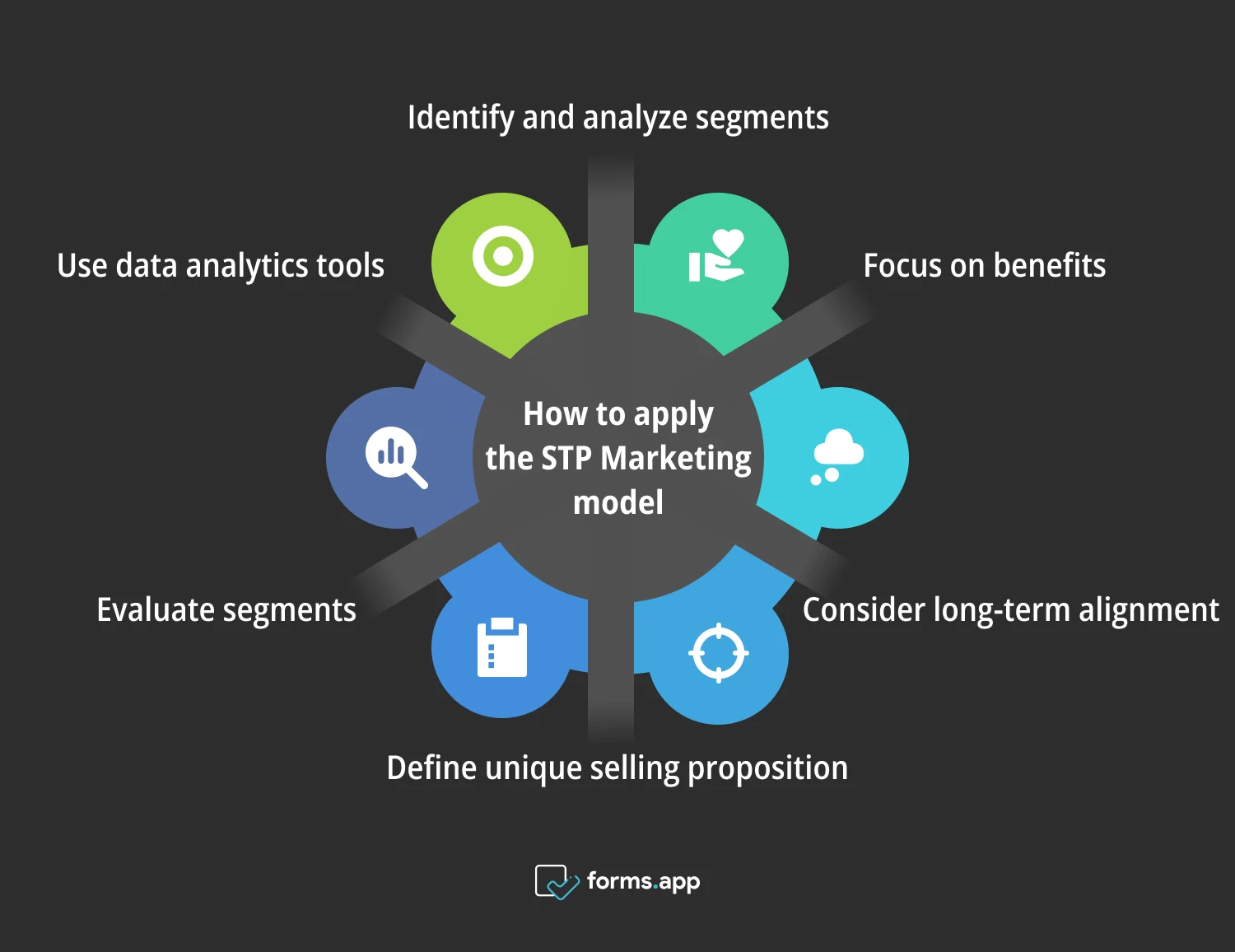
Steps to apply the STP Marketing model to your own brand
- Identify and analyze segments and ensure they are measurable, accessible, substantial, and differentiable
- Use data analytics tools to identify the segments
- Evaluate segments and select the target market accordingly
- Consider long-term alignment with brand values and avoid over-segmentation
- Define unique selling proposition and communicate positioning
- Focus on benefits for the target segment, monitor and adapt positioning depending on feedback and changes in the market
Advantages & Disadvantages of the STP Marketing model
There are a number of advantages and disadvantages of the STP marketing model. Considering these pros and cons will help you better understand the use of STP and how you can best benefit from it. Below, we made a list of both the advantages and disadvantages of the STP marketing model:
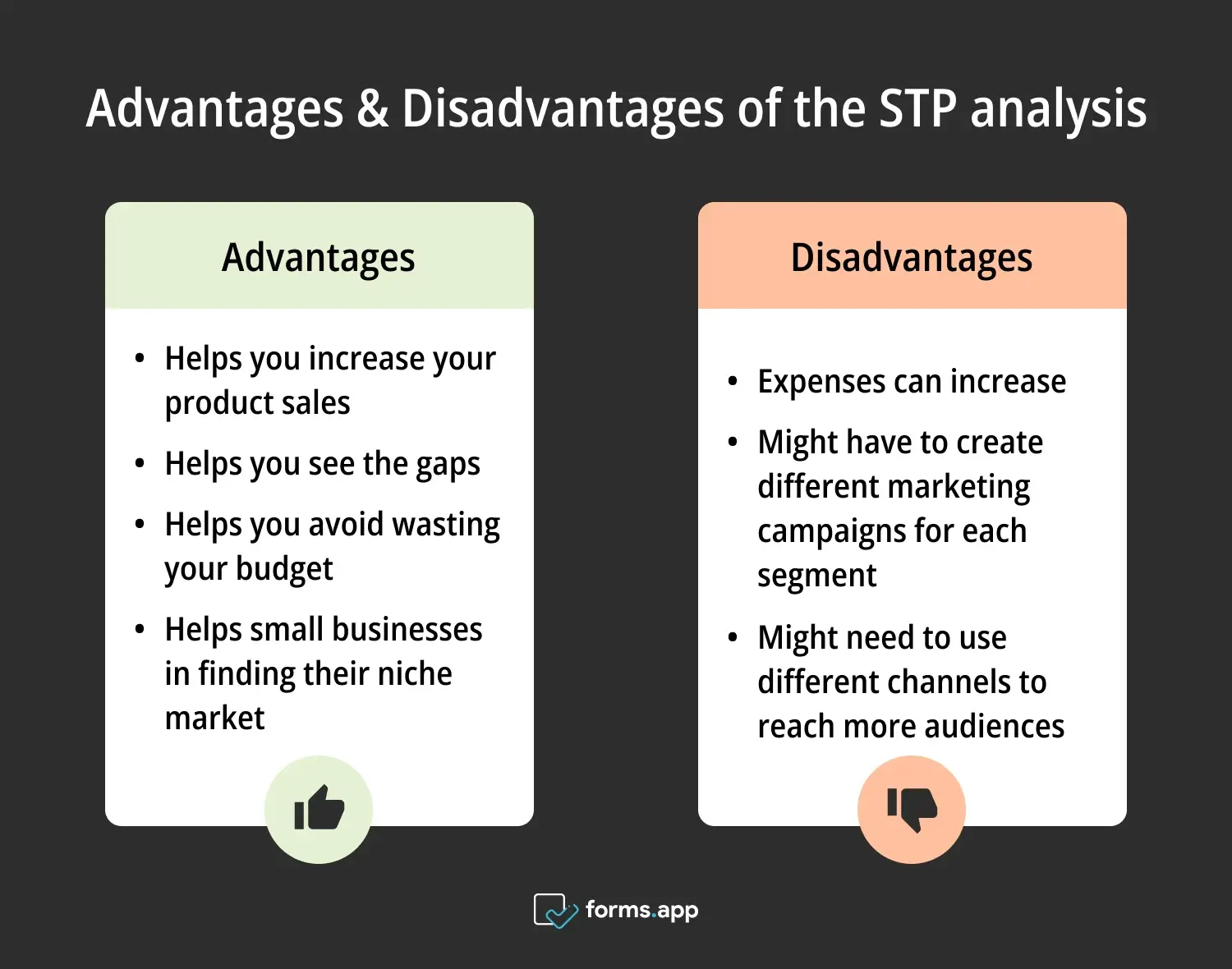
Pros and cons of the STP marketing model
Advantages
➕STP helps you increase your product sales by identifying a target market.
➕It helps you see the gaps in the market.
➕Promoting your product to the whole market helps you avoid wasting your budget.
➕It helps small businesses in finding their niche market and succeed.
Disadvantages
➖Expenses can increase if you have to produce multiple editions of your product or service.
➖You might have to create different marketing campaigns for each segment you have.
➖You might need to use different channels to reach more audiences or different customer segments, which may, again, increase the costs.
Frequently asked questions about STP Marketing strategy
Above, we had a look into the STP marketing model and the role and benefits of each step to your business and product. In order to clarify a few important points, we have also answered some frequently asked questions about STP marketing strategy.
STP signifie Segmentation, Ciblage et Positionnement en marketing.
La formule STEP est un outil efficace pour créer des campagnes de marketing numérique. Il se compose de quatre éléments: Sélectionner, Cibler, Engager et Proposer.
La formule STEP peut compléter et améliorer le modèle de marketing STP grâce à un cadre plus complet. Elle améliore l'engagement et crée une position plus forte.
Key takeaways
Throughout this article, we have identified the STP marketing model, its three steps, that are Segmentation, Targeting, and Positioning, how each of these elements impacts your marketing strategy, and how you can apply them to your product or service considering the advantages and disadvantages.
STP serves as a strategic marketing model for your business to increase your profits and appeal to more customers who wish to purchase your product. It allows you to identify your target audience by segmenting them based on varied categories, such as geography, age, lifestyle, and preferences, which also aids you to create the best product. You can also use it for your business to reach the best audience and achieve success.
Elif enjoys sharing her expertise through helpful guidelines and tips about marketing and business planning. She is also a linguist who has a deep interest in maps, history, culture, and languages.



 7 minutes de lecture
7 minutes de lecture